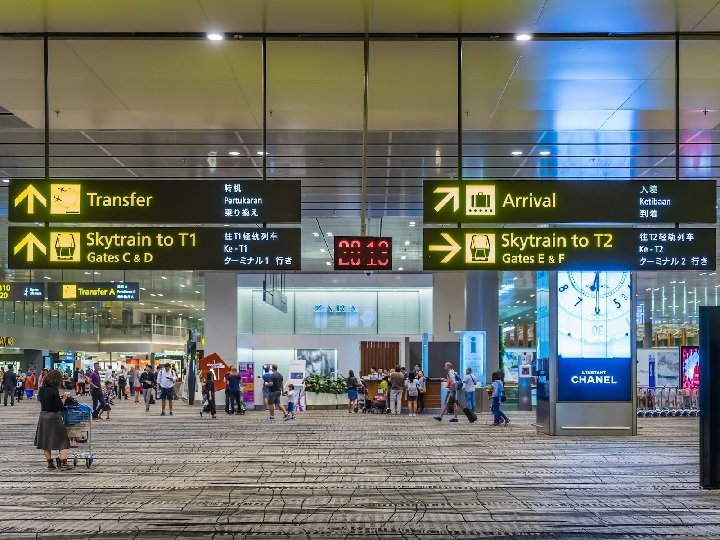Discover the future of air travel Encounter automated lanes at Changi Airport , revolutionizing your travel experience! #ChangiAirport
Air travel is undergoing a remarkable transformation. Once defined by long queues, tedious check-ins, and extended wait times, it is now entering a new era driven by technology, efficiency and a commitment to enhancing passenger experience. With rising global connectivity and post-pandemic demands for safer, more seamless journeys, airports around the world are adapting rapidly. Among them, Changi Airport in Singapore stands out as a trailblazer, redefining how we think about travel.
Changi Airport has long been celebrated for its excellence. From lush indoor gardens to cutting-edge amenities, the airport has consistently ranked among the best in the world. Now, it’s raising the bar again with its introduction of automated lanes changi airport, an innovation that embodies the future of smart air travel. This development signals not just an upgrade in infrastructure but a holistic shift in how passengers interact with airport processes from check-in to boarding.
The concept of automated lanes is simple yet transformative. At its core, it involves the use of advanced biometric recognition systems, artificial intelligence and seamless integration to allow travellers to move through various airport checkpoints with minimal human intervention. Whether checking in for a flight, passing through immigration or boarding, passengers experience faster, more secure processing. These smart systems identify individuals via facial recognition or fingerprint scans, eliminating the need for repeated document checks. As a result, bottlenecks are reduced and travellers enjoy a smoother, more intuitive journey through the airport.
Historically, air travel has faced numerous challenges. From technical limitations and safety concerns to cumbersome regulations and overwhelming passenger volumes, these obstacles have long hindered efficiency. In response, airports have progressively incorporated digital tools, but the leap to full automation marks a significant turning point. It’s not just about digitising old systems, it’s about reimagining the entire travel experience.
The vision behind Changi’s automated lanes is rooted in its broader commitment to innovation. Since opening in 1981, the airport has consistently embraced forward-thinking solutions, building a reputation for excellence in design, efficiency and passenger satisfaction. Its latest move toward automation is a natural extension of this philosophy. The integration of AI, real-time data analytics and smart interfaces is not only improving operational capacity but also creating a more personalised and stress-free environment for travellers.
Automated lanes operate through a series of interconnected systems. Upon arrival, passengers can use self-service kiosks to check in, where biometric data is captured. This data then follows the traveller through subsequent checkpoints. At immigration, biometric gates verify identities in seconds. Even boarding becomes frictionless, as gates recognise passengers and validate boarding passes automatically. Each step reduces human error, speeds up processing and enhances overall security.
For travellers, the benefits are immediate and tangible. Long queues are replaced by swift, intuitive processes. The reduction in manual checks also allows staff to focus on assisting passengers with more complex needs, improving the overall service landscape. Travellers report higher satisfaction levels, citing ease of use, clarity of instructions and time saved as key advantages. While occasional technical hiccups may arise, the system’s overall reliability has been praised for significantly enhancing the airport experience.
Changi’s approach is not just about convenience, it’s about future readiness. As air travel rebounds and passenger numbers grow, the need for scalable, efficient systems becomes ever more pressing. The airport’s smart infrastructure is designed with growth in mind, capable of adapting to rising demands without sacrificing quality. This positions Changi as a model for airports worldwide, showcasing how thoughtful integration of technology can lead to smarter, safer and more sustainable travel.
Looking ahead, Changi Airport continues to explore ways to push the boundaries of innovation. Projects in development include AI-assisted baggage handling, predictive security screening, and eco-friendly practices such as automated energy management. Each initiative ties into the airport’s overarching vision: to provide a travel experience that is as effortless as it is exceptional.
As these innovations gain traction, the ripple effects across global aviation will be profound. Other airports are already taking cues from Changi’s success, recognising that automation is not a luxury but a necessity in meeting modern travel expectations. The seamless integration of systems, user-centric design and commitment to excellence position Changi not merely as an airport, but as a leader shaping the next generation of air travel.
Conclusion
Changi Airport’s automated lanes are more than a technological upgrade; they represent a paradigm shift in how we experience travel. By leveraging artificial intelligence, biometrics, and real-time data, the airport has crafted a journey that is faster, safer and more intuitive. These advancements address long-standing challenges while anticipating the needs of future travelers. As the global aviation industry continues to evolve, Changi stands as a shining example of what’s possible when innovation meets vision. The future of air travel has arrived and it begins at Changi Airport.

